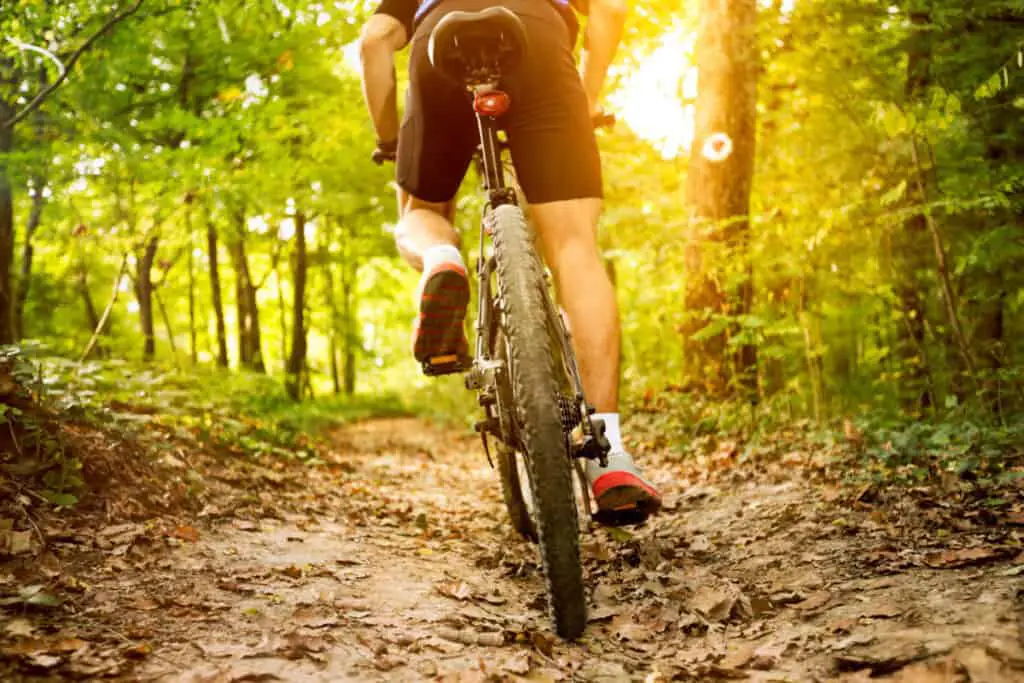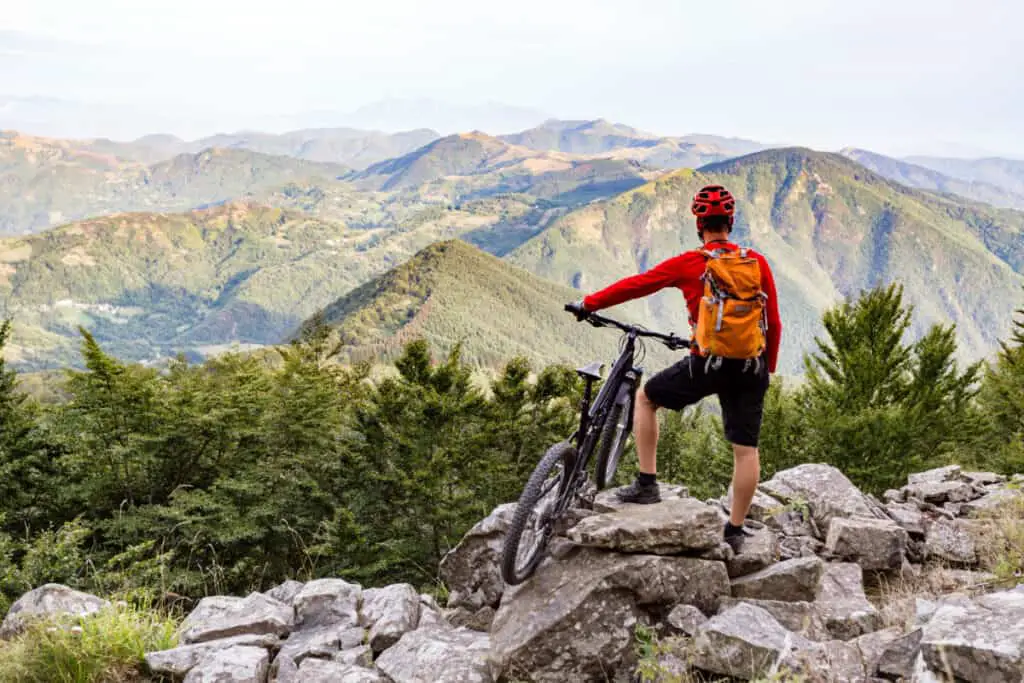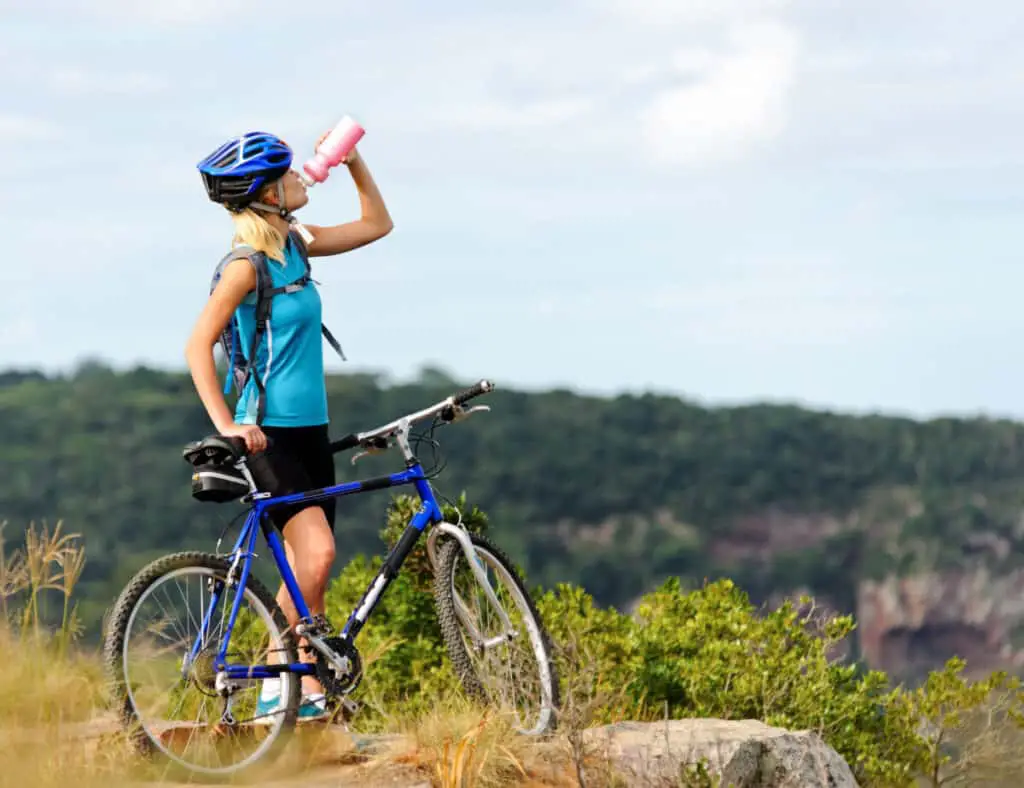
Want to start mountain biking but don’t know where to begin? When learning to mountain bike, it is best to start with the basics, especially in regards to safety while on the mountain. Read below to discuss the top 8 safety measures for beginner mountain bikers to follow!
- Always wear a helmet.
- Stay in control of the situation and the bike.
- Dress right.
- Plan ahead.
- Be prepared for an emergency.
- Proceed with caution.
- Pace yourself.
- Make sure the trail and your equipment are ready.
Now that we have a basic idea of the safety measure that we must follow as mountain biking beginners. Let dig a little deeper into
1. Always Wear a Helmet
When riding your bike anywhere, wearing a helmet is a must, but especially when you’re out on mountain bike trails. You may fall, crash, not duck under a branch in time, or you might even run into a tree. All of these things can cause serious injuries. Furthermore, those injuries can be lessened (or even completely eliminated) by wearing a helmet. Helmets reduce the risk of severe head injuries by almost 70%.
Helmets are less effective, though, if they don’t fit properly. Here are a couple of tests to check the fit of your helmet:
- You should be able to fit your index finger between the front of the helmet and your forehead.
- Your helmet should sit squarely on top of your head and not slide back with movement.
- Side straps should be pulled upwards and tightened just below your ears.
- Chin straps should be tight, but not suffocating. If your helmet pulls down when you open your mouth, it’s on right.
2. Stay in Control of the Situation and the Bike
Being in control while mountain biking means recognizing and avoiding potential dangers. If a path splits and starts looking unsafe, you should realize the danger and turn around. The first step to being in control is only riding on trails within your skill level. Don’t go after the most advanced courses if you’re just barely starting out!
You should always be in control of the speed of your bike, even if you’re an advanced mountain biker. Your skills don’t make you invincible. Riding at a suitable speed for the trail you’re on is very important to your safety. Another reason that controlling your speed is important is that the faster you go, the less time you have to react in the event of an emergency.
3. Dress Right
Wearing designated bike riding apparel is another way to stay safe. Any exercise clothes can work, as long as they will protect you in the event of a crash. Additionally, your clothing should not get caught in the tires or on the bike gears.
There are also several other types of safety gear that you can wear to make sure you’re safe. Gloves might be helpful for many reasons: they can lend a better grip on your handlebars and they can keep your hands from getting scratched in a crash. Knee and elbow pads are another great safety feature. Even sunglasses can help you stay safer by keeping the dust out of your eyes.

4. Plan Ahead
Being informed is imperative to your safety as a mountain biker! For example, knowing the weather forecast can help you avoid bad weather, and may even stop you from biking one day.
You should also know the trails that you’re riding. This doesn’t mean that you should never try new trails. Instead, treat new trails like new trails. Acting overconfident on a new trail could be dangerous. You should also inform yourself of the rules and regulations of the new trail.
Additionally, you should ensure that you can stay alert. Refrain from wearing earbuds or headphones while riding. Doing so ensures that you can hear the things going on around you.
5. Be Prepared For An Emergency
Watching for an emergency is another important way to stay safe, but being prepared for an emergency is an even better idea. To stay safe and prepared for every situation, do the following.
- Ride with a buddy! This way, you have a friend to call someone in case of an emergency, and vice versa.
- Bring your phone! Then you can actually call someone if you need to. If you must ride alone, share your location with people close to you and make sure your battery is fully charged!
- Bring your wallet. You can then have your ID and cash in the event that something happens.
- Bring water and snacks.
- Bring a first aid kit.
- Bring a patch kit. This will help if one of your tires goes flat.
6. Proceed with Caution
When turning on twisty trails, there may be areas where you can’t see around the corner. When you can’t see what’s around the corner, proceed with caution to avoid accidents and injuries. Try slowing down as you approach turns and hills. That way, you can bring the bike to a full stop (or keep going) depending on what is around the corner.
It’s always better to overly cautious than to accidentally injure someone as you come around a blind corner too quickly. In other words, this rule doesn’t just keep you safe, but it keeps others safe as well.

7. Pace Yourself
Not only physically, but mentally. Don’t be over-ambitious about your skill level. Allow yourself time to work up to your MTB goal by sticking with trails within your skill level. As your skills improve, you can move on and try new ones. As you progress you will be ready for new trails and you can challenge yourself with harder routes.
It takes time to learn how to MTB. If you struggle at first, take a deep breath. There will always be another day to try again (assuming you take the proper safety steps while riding). Pace yourself, and over time you will reach all of your MTB goals.
8. Make Sure Your Trails and Equipment are Ready
Before going out for an MTB ride, you should double-check that you have everything you need. Look out for the things mentioned above, as well as anything else you may need for this specific ride. This may include light reflectors (on your bike and clothes), water, your phone, and a trusty weather forecast.
If you follow each of these safety precautions, every MTB ride will be as enjoyable as the last. So what are you waiting for? Let’s hit the trails!


